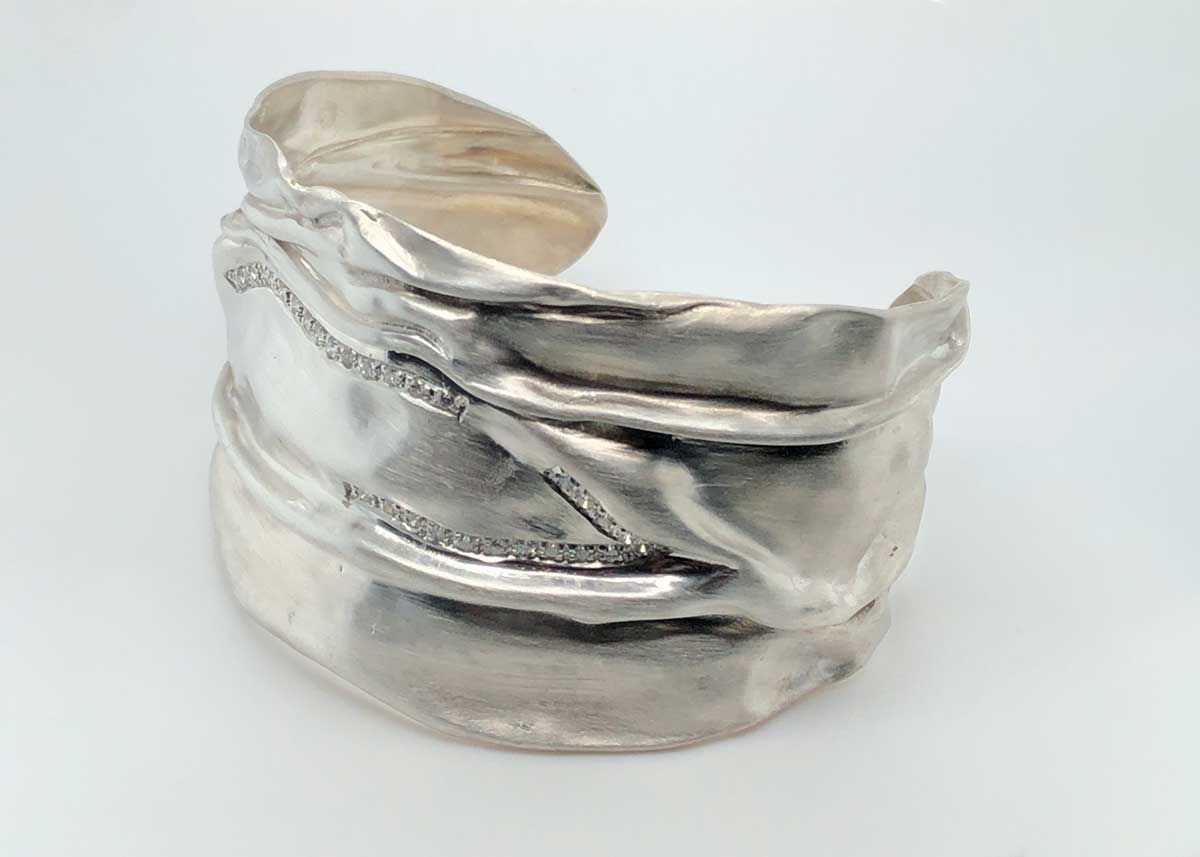
Jewelry Sizing
Since so many of you always ask, here is a guide on jewelry sizing, for necklaces, bracelets, and rings.
Chains and Necklaces
 This photo shows a scale chart for necklace lengths from choker to opera. Most standard necklace lengths fall between 16” and 18” because that’s where the neckline for clothing usually sits on the body. Obviously, we all have different types of necklines, depending on what we are wearing. Consequently, my studio makes most of our pendant chains adjustable between 16” and 18” to give you choices when getting dressed. In many cases, the pendant can be transferred to a longer or shorter chain for added variety.
This photo shows a scale chart for necklace lengths from choker to opera. Most standard necklace lengths fall between 16” and 18” because that’s where the neckline for clothing usually sits on the body. Obviously, we all have different types of necklines, depending on what we are wearing. Consequently, my studio makes most of our pendant chains adjustable between 16” and 18” to give you choices when getting dressed. In many cases, the pendant can be transferred to a longer or shorter chain for added variety.
If you’ve purchased a pendant from me that is fixed to its chain, we can adjust the chain by adding length to the back or inserting an added jump ring.
We love long chain necklaces here. Only one caution… don’t wear them on days when you are bouncing around a lot or getting up and down from a table constantly. In other words, beware of the potential to bang your pendant onto the edge of a table too many times.
Ring Sizing
It’s crucial to know that when a jeweler sizes your finger, we look for how that size will slide over your knuckle. Too easy and the ring can slide off. Too resistant to sliding means you may end up with a very tight ring which would be hard to get off should you need to. Do your hands swell at different times of the month or in the summer? Do you have arthritic knuckles? Ring sizing is part art and part science. It also depends on the width and contour of the band and the size of any center gemstone. Large stones can flop around the finger. Wide bands need a larger finger size than you might normally wear.

Trying to find someone’s ring size in secret? Take a ring to the jeweler and we can size it for you by sliding it on a mandrel. Then, we calculate the size based on the dimensions of the borrowed ring with how wide or narrow our ring is going to be. Again, science and art.
Real Simple magazine has a very good article about different ways to size your fingers at home.
Bracelets
A standard women’s bracelet is between 7” and 8” long. But we all know that wrist size is anything but standard. In addition, the style and width of the bracelet or cuff changes the fit, much like a ring. Obviously, link bracelets are much easier to size down. Cuff bracelets can be adjusted but only if the metal can be reformed.

The information below is taken from Rio Grande, a jewelry supply house. It is comprehensive and very helpful.
How to Find an Accurate Bracelet Size
To determine bracelet size, follow the steps below.
1. Measure the customer's wrist below the wrist bone (where you would normally wear your bracelet) using a bracelet gauge, a flexible measuring tape or a strip of paper.
2. If using a plain strip of paper, mark your strip with a pen where the end of the bracelet needs to be. Then measure the paper strip with a ruler. This is the wrist size.
3. To find the bracelet size, increase the wrist measurement by the increment below, based on how the customer wants the bracelet to fit.
For a snug fit, add 1/4" to 1/2".
For a comfort fit, add 3/4" to 1".
For a loose fit, add 1-1/4".
How to Determine Bangle Bracelet Size
1. Ask your customer to close her fingers together, bringing her thumb and little finger together (as though putting on a bangle).
2. Using a strip of paper or measuring tape, measure around the closed hand at the widest point, pulling the tape snug against the skin. If you are using a plain strip of paper, mark the paper with a pen, then measure the strip with a ruler. This is the circumference of the customer's hand.
3. Find the hand circumference below. Create (or choose) a bangle with a diameter at least 1/4" larger than the diameter shown below.
Converting Circumference to Diameter
7-1/2" is approx. 2-3/8" dia. (small)
8-1/4" is approx. 2-5/8" dia. (medium)
8-5/8" is approx. 2-3/4" dia. (large)
